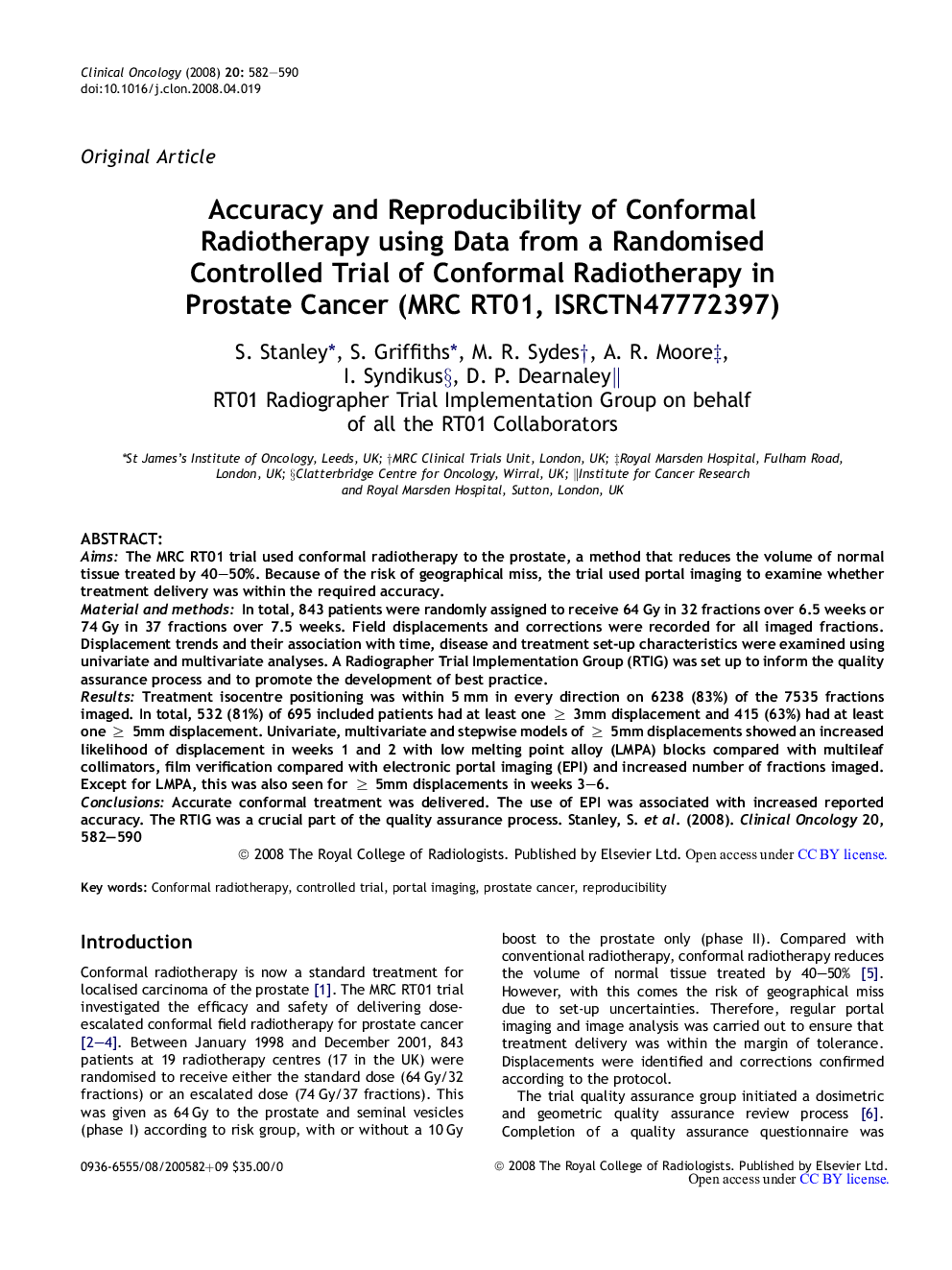| Article ID | Journal | Published Year | Pages | File Type |
|---|---|---|---|---|
| 5699541 | Clinical Oncology | 2008 | 9 Pages |
AimsThe MRC RT01 trial used conformal radiotherapy to the prostate, a method that reduces the volume of normal tissue treated by 40-50%. Because of the risk of geographical miss, the trial used portal imaging to examine whether treatment delivery was within the required accuracy.Material and methodsIn total, 843 patients were randomly assigned to receive 64 Gy in 32 fractions over 6.5 weeks or 74 Gy in 37 fractions over 7.5 weeks. Field displacements and corrections were recorded for all imaged fractions. Displacement trends and their association with time, disease and treatment set-up characteristics were examined using univariate and multivariate analyses. A Radiographer Trial Implementation Group (RTIG) was set up to inform the quality assurance process and to promote the development of best practice.ResultsTreatment isocentre positioning was within 5 mm in every direction on 6238 (83%) of the 7535 fractions imaged. In total, 532 (81%) of 695 included patients had at least one â¥Â 3mm displacement and 415 (63%) had at least one â¥Â 5mm displacement. Univariate, multivariate and stepwise models of â¥Â 5mm displacements showed an increased likelihood of displacement in weeks 1 and 2 with low melting point alloy (LMPA) blocks compared with multileaf collimators, film verification compared with electronic portal imaging (EPI) and increased number of fractions imaged. Except for LMPA, this was also seen for â¥Â 5mm displacements in weeks 3-6.ConclusionsAccurate conformal treatment was delivered. The use of EPI was associated with increased reported accuracy. The RTIG was a crucial part of the quality assurance process.
